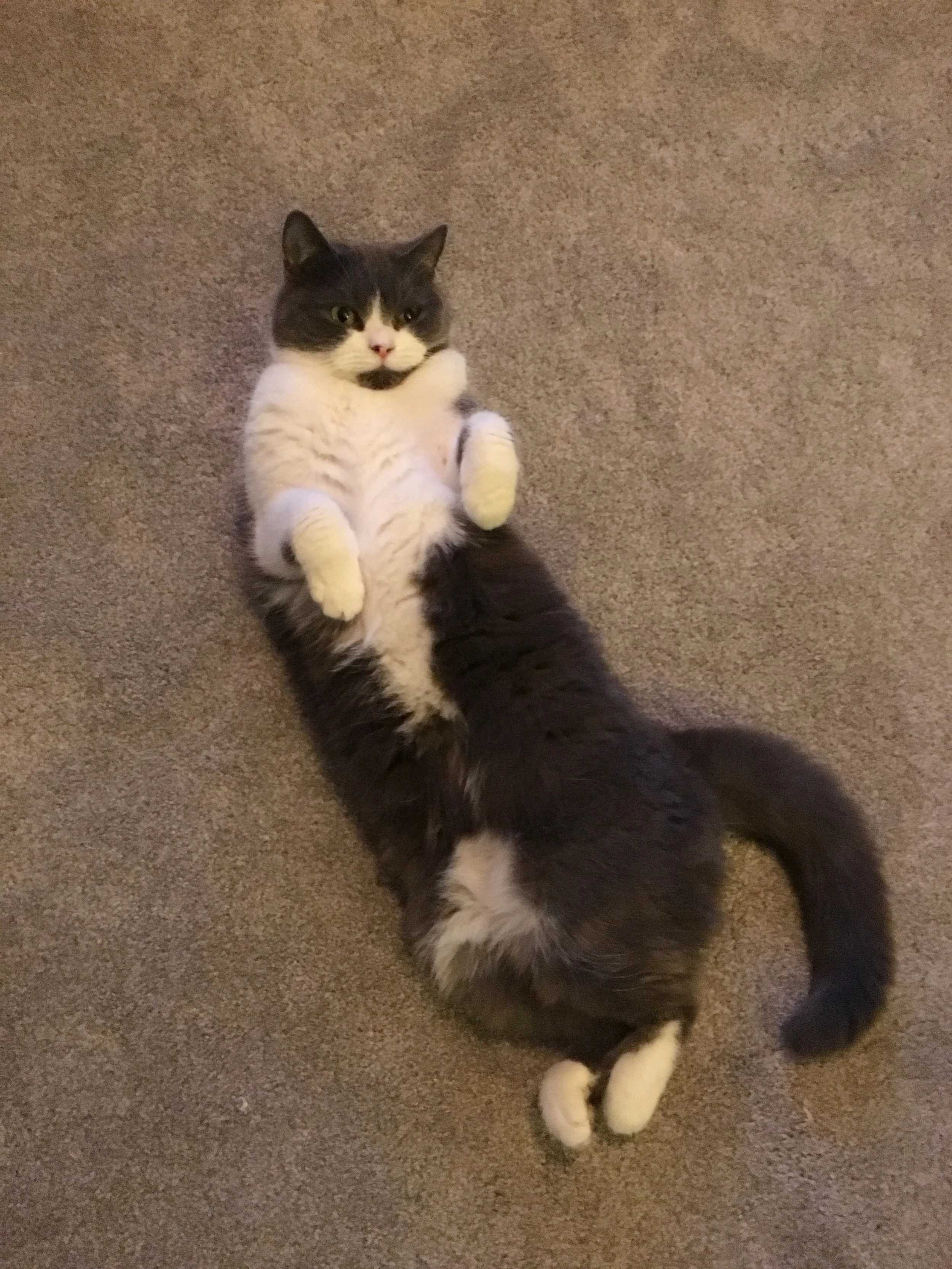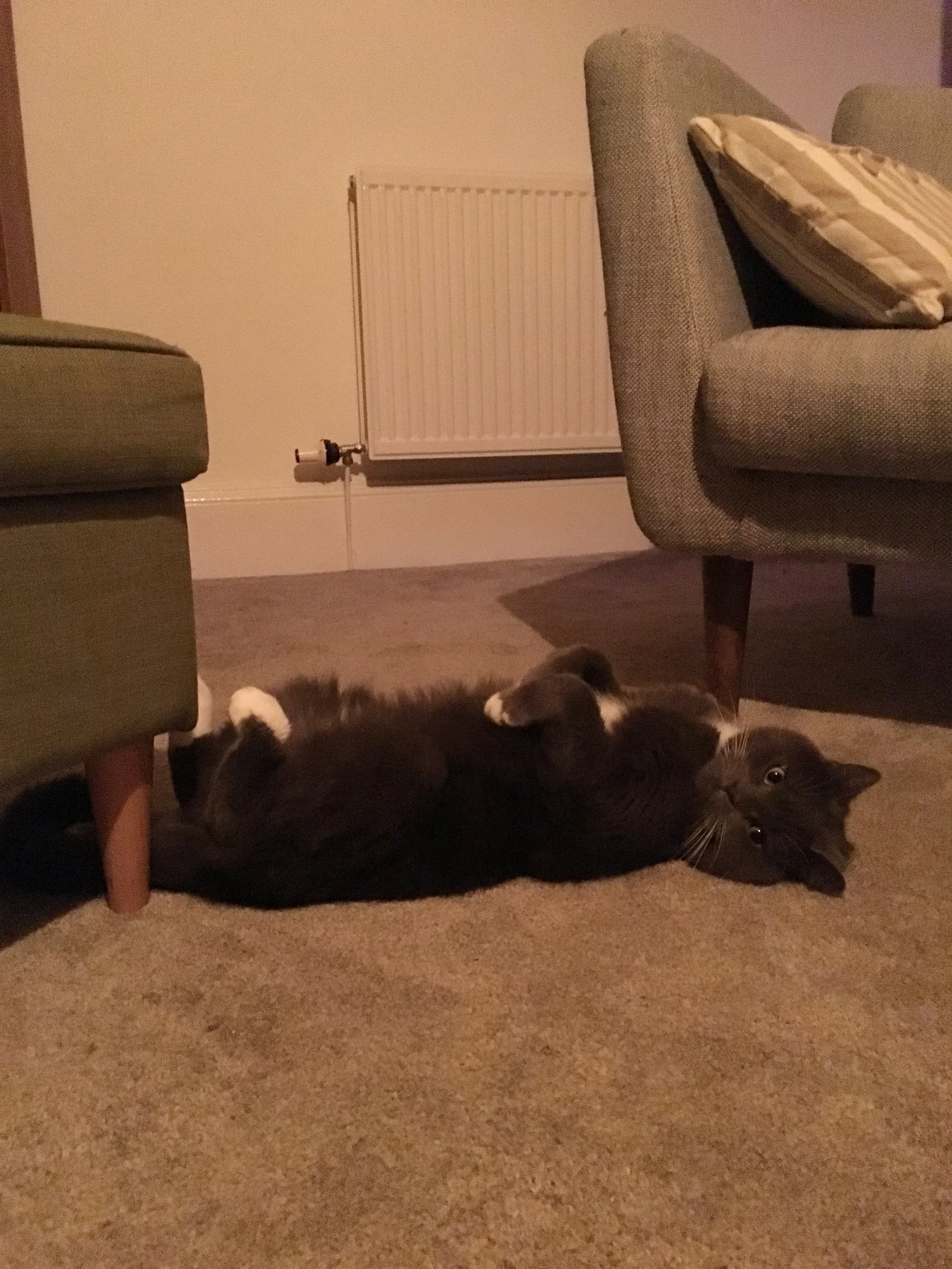Glasgow!
The friendliest welcome we received in Scotland was from a man with sibling cats named Cher and Hedwig. When we arrived at his fourth-floor apartment in Glasgow to stay two nights in his Airbnb listing, Cher impatiently confronted us on the landing, meowing and scrutinizing us with her round amber eyes, as our host stood at his door and exclaimed, “Quite a welcome party we’ve got for you!”
Unexpectedly, the cats—Cher and Hedwig—and their owner, Steven, provided Glasgow’s best entertainment of all. From the very start, Steven’s already sincere welcome to his home only improved as he cracked jokes that had us guffawing minutes afterward, with a type of Scottish humor that we didn’t know we’d been craving. But his cats were the true superstars of our conversations, mostly because they were always present forces in the room. Cher was either on top of Ari or Steven, purring with the force of helicopter rotors, or lying flat on her back on the floor (very un-catlike); Hedwig, whose shy, quiet attitude opposed Cher’s, drew our attention with his curious napping tendencies. He either slept face-down, paws tucked, on the floor, or he scrabbled his way up the eight-foot-tall open living room door to perch and doze, looking much like the owl he shares his name with in Harry Potter. Steven told us that the cats were the best (and most indulgent) purchase he’d ever made. I couldn’t agree more.
Cats aside, the city of Glasgow was not as easy on the eyes as Edinburgh, but if you looked past the grey buildings and ignored the incessant spits of rain, it had a lot to offer in the arts. The first place we visited was the spectacular, red sandstone-turreted Kelvingrove Art Museum across the park from Glasgow University. Inside, the eclectic collection of art pieces ranges from life-sized plaster animals and taxidermies in a first floor hall to smaller historical/art galleries with pieces by Matisse and Scottish landscape artists. I didn’t know quite what to make of it, but some of the Scottish landscape pieces and the textiles from the Burrell collection were astonishing. The fairylike paintings of the Scottish Highlands had me wanting to run for the hills a day early.
One of Glasgow’s biggest art and architectural influences was Charles Rennie Macintosh, as we soon learned. He designed the main building at the Glasgow School of Art in the early 1900s after studying there and was a key influence on the city’s architecture afterwards. We visited the Glasgow School of Art’s newer building—which faces Macintosh’s—to learn about the history of the school and witnessed the reconstruction of the flagship; it burned quite badly in a fire in 2014.
While we only got a taste of Macintosh’s architectural genius, I still found another building in the north part of the city to be somewhat more to the flavor of our appreciation. Glasgow’s Botanical Garden was situated between our Airbnb and the shops surrounding Ashton Lane, a collection of excellent restaurants, which naturally meant that we passed it about six times. We didn’t visit it until two hours before we departed. I am so happy we did. The main greenhouse—housing ferns and various other warm-wet-weather-loving plants—is enclosed by a half sphere of glass and metal. Other greenhouses at botanical gardens we’ve visited, such as the ones in Edinburgh, are typically rectangular. The intricacy of the circular glass house was a sight in it of itself but combined with the trees, plants, and brilliant flowers that reached up towards its dome, it was hypnotizing. It left me walking around the edges in circles, breathing in the aroma of humus in the soil and tasting the slightly sweet humidity of the air. I nearly didn’t find my way out of there.
-Sofia









